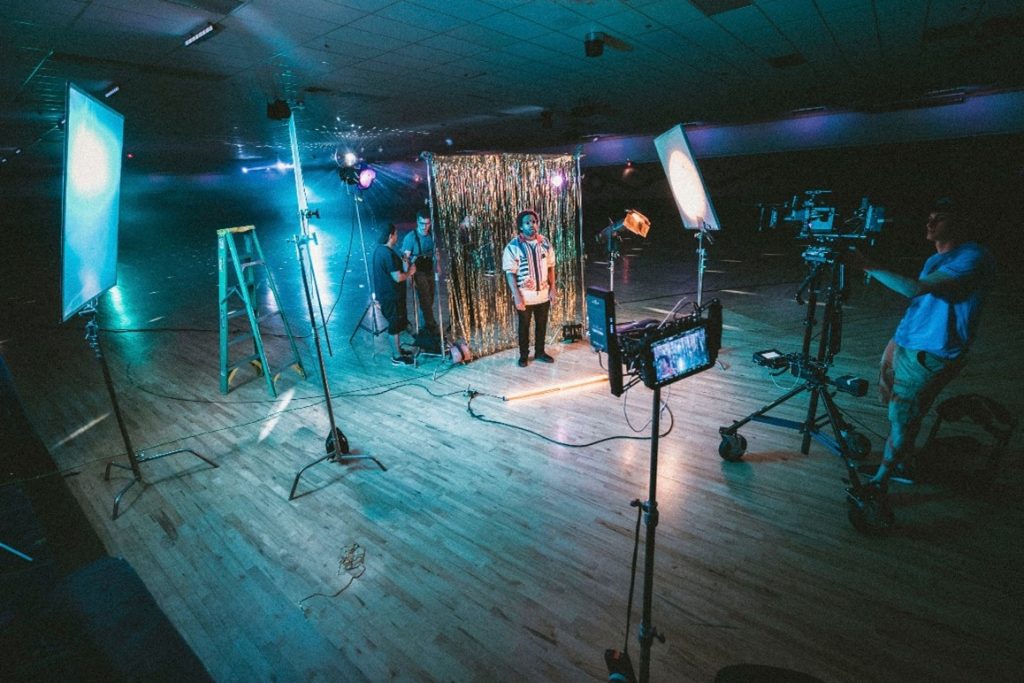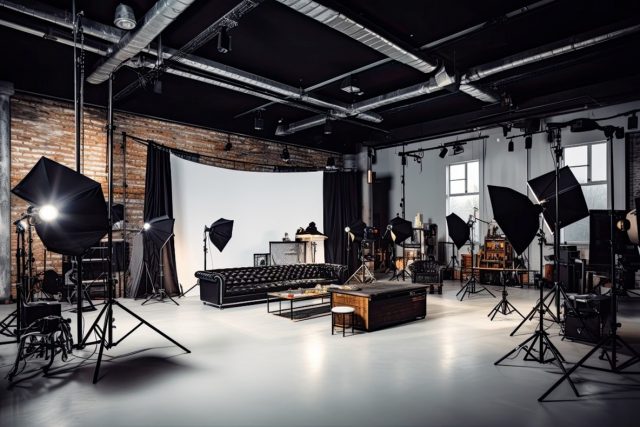Gina Argento of New York owns and operates Broadway Stages, a production company committed to a dual mission—sustainability and philanthropy. In the following article, Gina Argento pulls back the curtain to reveal behind-the-scenes dynamics, offering an exclusive look into the world of running a production studio that transcends traditional boundaries.
Organized chaos is perhaps the most apt term to describe most aspects of running a production studio, especially once the preparations are sorted and the time comes to film. However, those who are well-versed in the industry, like the experienced, passionate team at New York’s Broadway Stages, make it look more organized than chaotic.
From planning every detail of filming days, selecting the perfect locations, and choosing camera angles to managing teams, running sound checks, setting up the lighting, and editing videos, production studios do it all. While every company is different, with some outsourcing certain aspects of the film or TV show, the majority cover a surprising amount of the process themselves. As such, they must handle many moving parts, making day-to-day operations anything but simple.
Gina Argento of New York Says No Two Days are Alike
Those who love nothing more than a typical “day in my life as a XYZ” vlog may be disappointed — the hustle and bustle inside a production studio on Monday will be entirely different from the hullabaloo occurring on Thursday. There is no one-size-fits-all schedule here.
That said, this makes every day new and exciting (although no less stressful) for those involved.
Timing Is Everything in Show Business
Despite “organized chaos” being the affectionate term for the innerworkings of production studios, timing really is everything in the show business sphere. Hence, teamwork and management are critical to maintaining operational success. Without it, all the aforementioned moving parts would crumble into disarray, which would instead create chaotic chaos.
Gina Argento of New York explains that coordinators ensure that everything runs like clockwork, with plans B, C, and so on always in their back pockets in case of the unexpected. These individuals/teams guarantee that the right departments and people are always in the right place at the right time, with the right equipment and the right instructions.
Such professionals oversee day-to-day management of both the cast and crew, including hair and makeup, set design, lighting teams, sound pros, costuming, camera crew, and more.
Perhaps the most important aspect of a production studio’s job is ensuring that everybody is on the same page, whether they’ve been on the set before or not.
Providing the Essentials for High-Quality TV and Film
Beyond the time- and team-management-based elements, production studios provide everything needed to craft TV and film that viewers adore. Gina Argento of New York highlights such essentials like:
Film Locations
From banks to gas terminals to prisons, the most successful studios have a bunch of filming locations on hand to cater to all types of productions. Having a variety of locations adds to the authenticity of the show, after all.
Gina Argento of New York notes how many filmmakers scream Murphy’s Law (whatever can go wrong, will) when the mere suggestion of on-location shoots presents itself, and there’s certainly a good argument for that. Some places are a true nightmare due to high travel costs, lack of power, bad lighting, and weather that just won’t play ball.
Regardless, the best of the best know how (and have the capacity) to handle these adversities, and this is usually done with…

Soundstages
As previously mentioned, part of running a successful production studio rests on the ability to adapt to ever-evolving landscapes.
Gina Argento of New York says that Broadway Stages, for instance, boasts over 60 soundstages across the city’s three boroughs that can handle all manner of sizes, styles, and types of production.
These facilities avoid all the often-uncontrollable challenges of filming on location. They’re essentially large warehouse-esque constructions that are typically utilized alongside green screens to incorporate real-life and computer-generated backdrops and effects into production.
Space for Support Crews
Gina Argento of New York explains that sometimes support crews are in-house, and sometimes they aren’t. Either way, production studios must have the necessary space to complete their tasks to the highest standards. Whether it’s office space for sketch artists and scriptwriters, dressing rooms for hair, makeup, and wardrobe, shops for construction and scenery, or areas for storage and just about anything else, they’ll provide it.
Equipment
Grip, lighting, and power equipment are often outsourced. However, the likes of Broadway Stages offer both the crew and equipment in-house. Gina Argento of New York says that while the viewers themselves may not ever see all the bells and whistles that can make or break the production, they are completely integral to the quality of the final product.
Production Studios: The Amalgamation of Incredible Planning and Artistic Planning
Gina Argento of New York says that truly experiencing the “behind the scenes” of a production studio is something that most will only ever dream about. However, by gaining an understanding of all these intricacies, people can develop a better grasp of the effort, experience, and commitment that goes into their favorite shows.








